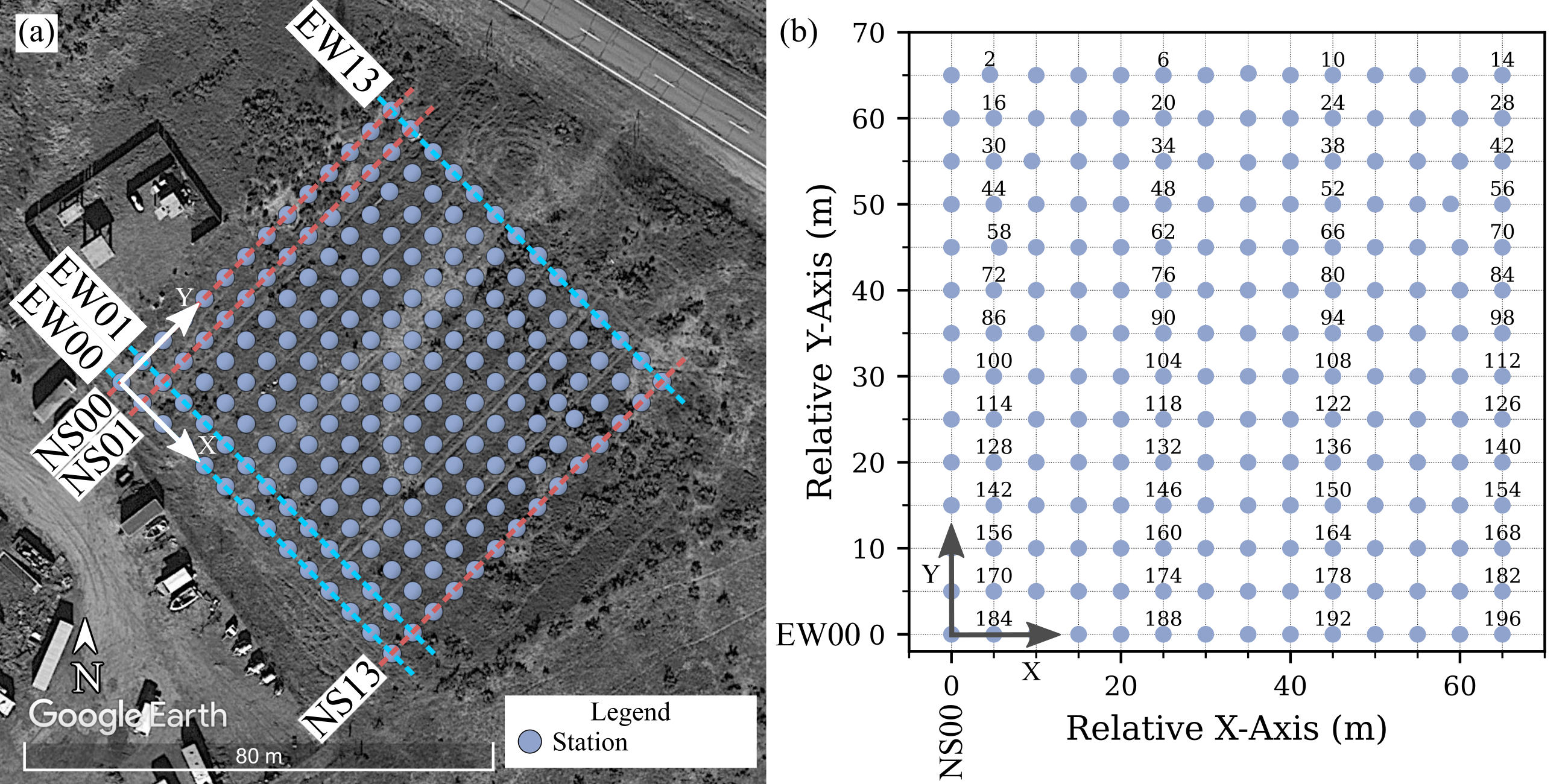
Subsurface Imaging Dataset Acquired at the Garner Valley Downhole Array Site using a Dense Network of Three-Component Nodal Stations
There is a growing need to characterize the engineering material properties of the shallow subsurface in three-dimensions for advanced engineering analyses. However, imaging the near-surface in three-dimensions at spatial resolutions required for such purposes remains in its infancy and requires further study before it can be adopted into practice. To enable and accelerate research in this area, we present a large subsurface imaging dataset acquired using a dense network of three-component (3C) nodal stations acquired in 2019 at the Garner Valley Downhole Array (GVDA) site. Acquisition of this dataset involved the deployment of 196, 3C nodal stations positioned on a 14 by 14 grid with a 5-m spacing. The array was used to acquire active-source data generated by a vibroseis truck and an instrumented sledgehammer, and passive-wavefield data containing ambient noise. The active-source acquisition included 66 vibroseis and 209 instrumented sledgehammer source locations. Multiple source impacts were recorded at each source location to enable stacking of the recorded signals. The active-source recordings are provided in terms of both raw, uncorrected units of counts and corrected engineering units of meters per second. For each source impact, the force output from the vibroseis or instrumented sledgehammer was recorded and is provided in both raw counts and engineering units of kilonewtons. The passive-wavefield data includes 28 hours of ambient noise recorded over two night-time deployments. The dataset is shown to be useful for active-source and passive-wavefield three-dimensional imaging as well as other subsurface characterization techniques, which include horizontal-to-vertical spectral ratios (HVSRs), multichannel analysis of surface waves (MASW), and microtremor array measurements (MAM).
